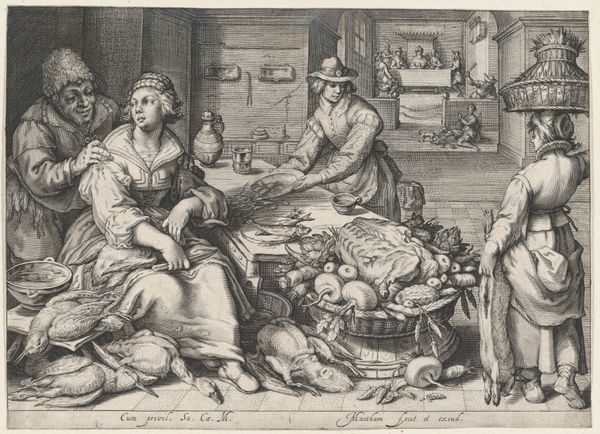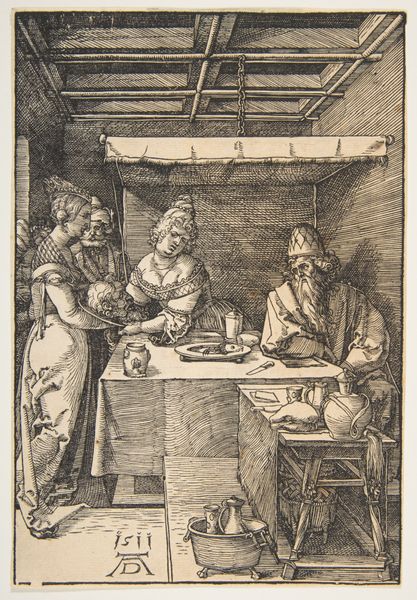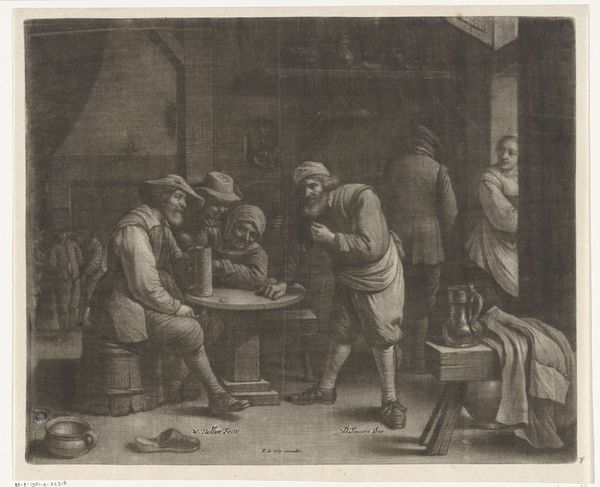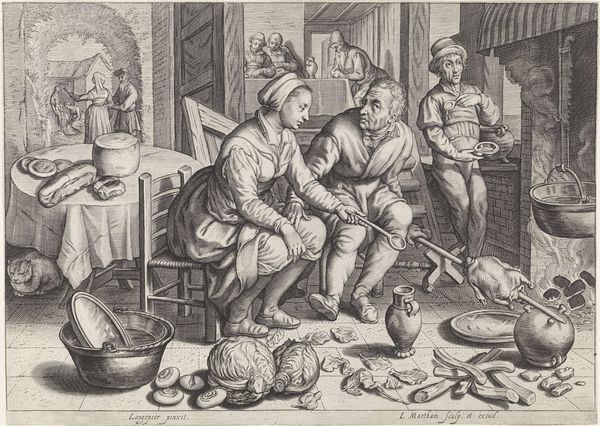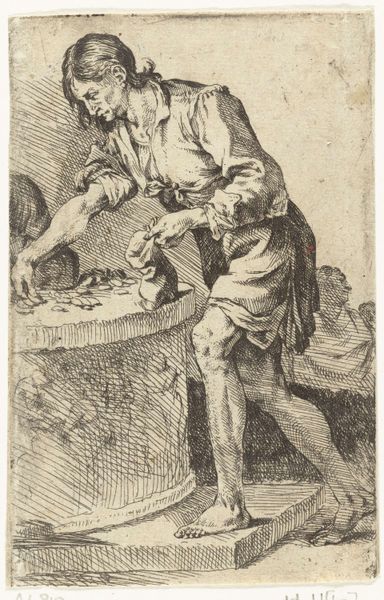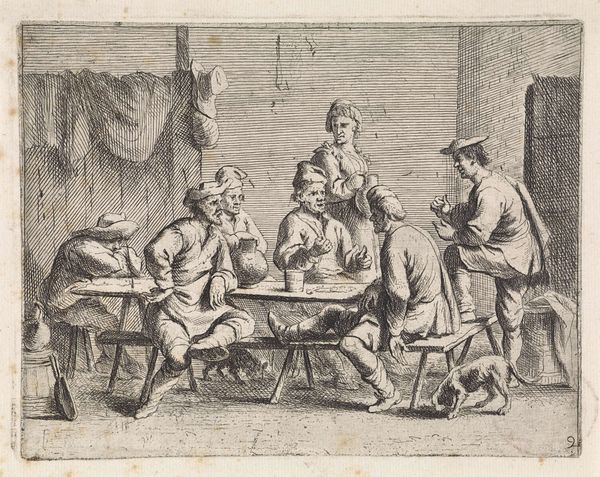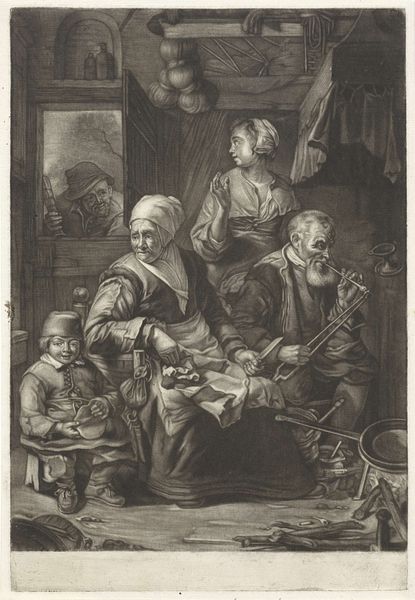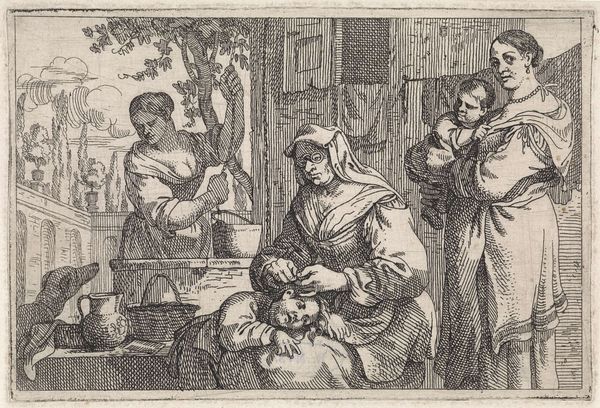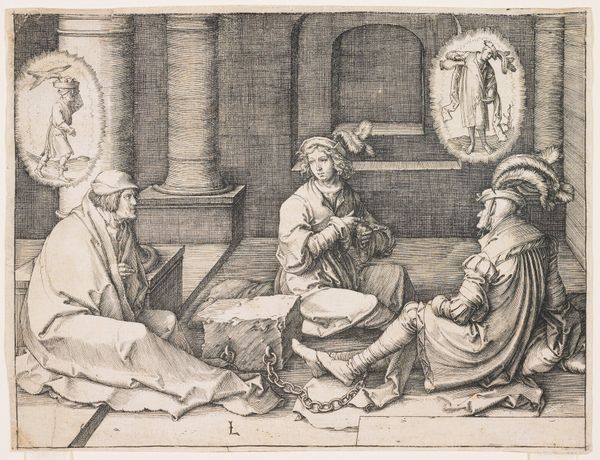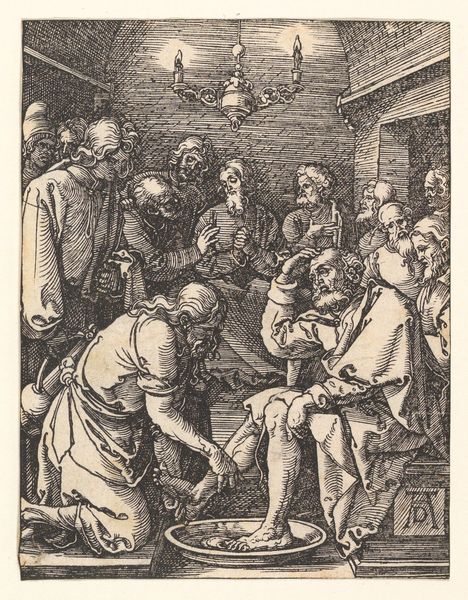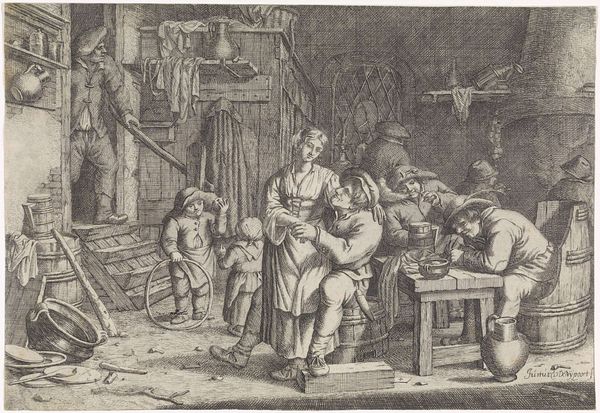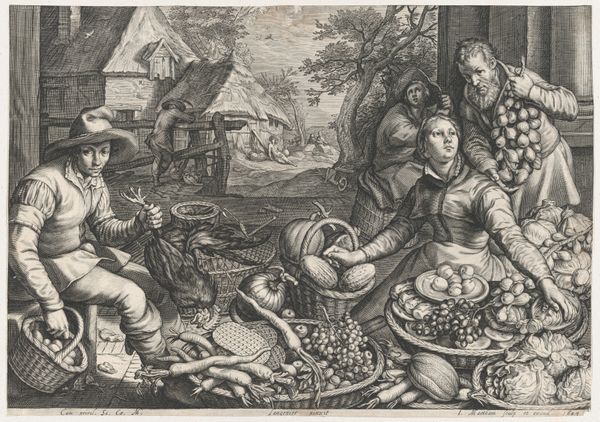
oil-paint
#
portrait
#
food
#
baroque
#
oil-paint
#
oil painting
#
underpainting
#
men
#
painting painterly
#
genre-painting
#
northern-renaissance
#
portrait art
#
realism
Dimensions: 44 3/4 x 63 in. (113.7 x 160 cm)
Copyright: Public Domain
Editor: We are looking at Peter Wtewael's "Kitchen Scene," painted in the 1620s. It's an oil on panel piece. There is an intense physicality to the food that is quite striking, an honest and immediate presentation. What aspects of its composition and use of materials stand out to you? Curator: Observe how Wtewael meticulously renders each object and figure, primarily emphasizing their tactile qualities and arrangements within the space. Consider the interplay of light and shadow and how it defines form, giving a clear structure. Are you not struck by how the arrangement of elements, the interplay of light, shadow and form contribute to a stable compositional equilibrium? Editor: Yes, absolutely. The way the light catches the different textures – the feathers, the metal, the skin of the meat – it’s almost photographic in its detail. The painter is not avoiding representing material reality; he is seeking it out. It is compelling. What does that focus on materiality convey? Curator: The artist's rendering of these commonplace objects celebrates the inherent aesthetic properties present in daily existence. What Wtewael constructs within the frame, and not its representational aspect, constitutes its value. How might one discuss the emotional content in that respect? Editor: I see. It's not about a story; it is more about shapes, colors, textures and composition that make it fascinating. Curator: Precisely. Form is prioritized over narrative, guiding the viewer’s gaze through a calculated choreography of lines, colors, and shapes. The emotional and intellectual elements emerge solely from such structural qualities. Editor: This way of seeing it definitely encourages one to look more closely at the details! I never considered interpreting paintings this way, purely through form and material reality rather than historical content or interpretation. Curator: Indeed. Recognizing the painting’s intrinsic attributes heightens our appreciation. This close study lets us appreciate not only what is depicted but how it’s rendered.
Comments
No comments
Be the first to comment and join the conversation on the ultimate creative platform.
